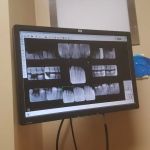What to Expect During a Dental Consultation for Implants
Considering dental implants can be an exciting yet daunting decision for many people. If you’ve been experiencing tooth loss, or have been told you need a replacement for a missing tooth, the idea of a dental implant consultation might bring up questions and concerns. As someone who’s undergone this process, I can share my personal experience and help you understand what to expect during your first consultation. Dental implants are a long-term solution that can give you a natural-looking, functional tooth, but the process involves a few key steps that are essential to understand. This article will guide you through what you can expect during the consultation for dental implants, so you can feel confident and informed as you embark on this journey.
1. Initial Consultation: The First Step Towards a Solution
The first consultation for a dental implant typically begins with a discussion about your dental and medical history. This helps your dentist determine whether dental implants are a suitable option for you. In my case, I was asked about any existing medical conditions or medications I was on, as these can affect the healing process. It’s important to be upfront and honest about your health to avoid complications later on.
During this consultation, your dentist will assess your overall oral health. They will look at the condition of your gums, any bone loss in the jaw, and the general health of your teeth. Depending on your specific situation, the dentist might also ask for X-rays or 3D images of your mouth to better understand the structure of your jaw. These images help to determine whether there is enough bone to support the implant. If bone loss is detected, the dentist may recommend a bone graft to create a stable foundation for the implant.
If everything looks good and the dentist deems you a good candidate for implants, they will walk you through the entire process, including the expected timeline, the materials used for the implants, and the costs involved. I remember feeling reassured after my first consultation because the dentist explained every detail, answered my questions, and made me feel comfortable moving forward with the procedure.
2. Understanding the Procedure and its Steps
Once your dentist determines that you are a good candidate for dental implants, the next step is to discuss the procedure in greater detail. During the consultation, you will learn about the surgery process itself, including the number of appointments required, anesthesia options, and the steps that will be taken to ensure the implant is securely placed in your jawbone.
For me, the idea of surgery was initially intimidating, but I was reassured by the professional explanation of the process. The dentist explained that the implant would be placed in my jawbone under local anesthesia, which would ensure I wouldn’t feel any pain during the procedure. I was also informed about the recovery period, which can vary depending on the complexity of the procedure. Typically, it takes a few months for the implant to properly integrate with the jawbone, a process known as osseointegration.
The consultation will also cover potential risks and complications. As with any surgical procedure, there is always a risk of infection, bleeding, or implant failure. Understanding these risks ahead of time helped me mentally prepare for the process and take necessary precautions.
3. Bone Grafting and Sinus Lifts for Better Implant Placement
During my consultation, my dentist informed me that there could be additional procedures required depending on the condition of my jawbone. In some cases, especially if there’s significant bone loss, a bone graft or sinus lift may be necessary to create a solid foundation for the implant. These procedures may involve using bone from another part of your body or a synthetic material to augment the jawbone.
Bone grafting is a crucial part of ensuring the implant has enough support. In my case, the dentist took X-rays and scans to determine that bone grafting was required before the implant could be placed. While bone grafting extends the overall timeline of the implant process, it significantly improves the long-term success of the implant.
Similarly, a sinus lift is a procedure used when the upper jaw doesn’t have enough bone for an implant, typically in the area of the back teeth. If you’re a candidate for these procedures, your dentist will explain how they’re done, the recovery time, and what to expect afterward.
4. The Cost Breakdown: What You Need to Know
One of the biggest concerns many patients have is the cost of dental implants. During my consultation, the dentist provided a detailed breakdown of the costs involved. Dental implants can be more expensive than other restorative procedures like bridges or dentures, but they offer a permanent solution that provides a natural look and feel.
The cost can vary based on factors like the location of the practice, the number of implants needed, the materials used, and whether any additional procedures (like bone grafting) are required. Be sure to ask about financing options or payment plans that may be available to help manage the cost. In my case, the dental office offered a payment plan that made the cost more manageable, and they worked with my insurance provider to maximize coverage.
During the consultation, the dentist will give you a comprehensive estimate of the total cost, including any potential follow-up appointments. This transparency is key to avoiding any surprises down the line.
5. Aftercare and Recovery: Preparing for the Healing Process
After the implant surgery, there will be a recovery period. Depending on the complexity of the surgery, you might experience some swelling, bruising, or discomfort. In my case, I was given clear aftercare instructions, which included pain management options and instructions on how to care for the implant site during the healing process.
During the consultation, the dentist will discuss the aftercare process in detail. You’ll need to avoid certain foods, refrain from smoking, and follow a good oral hygiene routine to ensure proper healing. The dentist will likely schedule follow-up appointments to monitor the healing process and ensure the implant is integrating properly with the jawbone.
It's important to follow the dentist’s instructions carefully to minimize the risk of complications and ensure the long-term success of your implant. I found that sticking to the aftercare plan was crucial for my recovery, and it significantly improved my experience.
6. When to Consider a Second Opinion
While I had a positive experience during my dental implant consultation, it's essential to mention that dental implants are a significant decision, and seeking a second opinion is always an option. If you have any doubts or concerns, I highly recommend consulting another qualified dentist to make sure you’re getting the best advice for your situation.
Getting a second opinion can help you understand all available treatment options and make sure you're confident in your decision moving forward. It’s also a good way to get a clearer idea of the costs, procedures, and timeline involved in the process.
If you’re ready to start your dental implant journey or want more information about implants and aftercare, feel free to visit Dentistry Toothtruth here for more details.







 Armendariz Family Dentistry - Bethany Armendariz5.0 (310 review)
Armendariz Family Dentistry - Bethany Armendariz5.0 (310 review) West Coast Dental of South Gate3.0 (495 review)
West Coast Dental of South Gate3.0 (495 review) Bryn Mawr Periodontal Associates, Ltd.4.0 (277 review)
Bryn Mawr Periodontal Associates, Ltd.4.0 (277 review) Dental Solutions of Bala Cynwyd4.0 (448 review)
Dental Solutions of Bala Cynwyd4.0 (448 review) Little Smiles Dental - Pediatric Dentist Worcester4.0 (801 review)
Little Smiles Dental - Pediatric Dentist Worcester4.0 (801 review) SmileLine Dental: Dr. Geeta Choudhary, DDS4.0 (87 review)
SmileLine Dental: Dr. Geeta Choudhary, DDS4.0 (87 review) The Importance of Oral Health Education During Pregnancy for a Healthy Pregnancy
The Importance of Oral Health Education During Pregnancy for a Healthy Pregnancy Best Tips for Brushing Your Teeth Properly for Healthy Gums: Essential Techniques for Oral Health
Best Tips for Brushing Your Teeth Properly for Healthy Gums: Essential Techniques for Oral Health Why Skipping Dental Checkups Can Lead to Bigger Oral Health Problems
Why Skipping Dental Checkups Can Lead to Bigger Oral Health Problems Advantages of Porcelain Dental Restorations
Advantages of Porcelain Dental Restorations How Can Diabetes Cause Tooth and Gum Problems? Preventing and Managing Oral Health Issues
How Can Diabetes Cause Tooth and Gum Problems? Preventing and Managing Oral Health Issues Healthy Habits for Promoting Good Oral Health and Hygiene: Tips for a Healthy Smile
Healthy Habits for Promoting Good Oral Health and Hygiene: Tips for a Healthy Smile